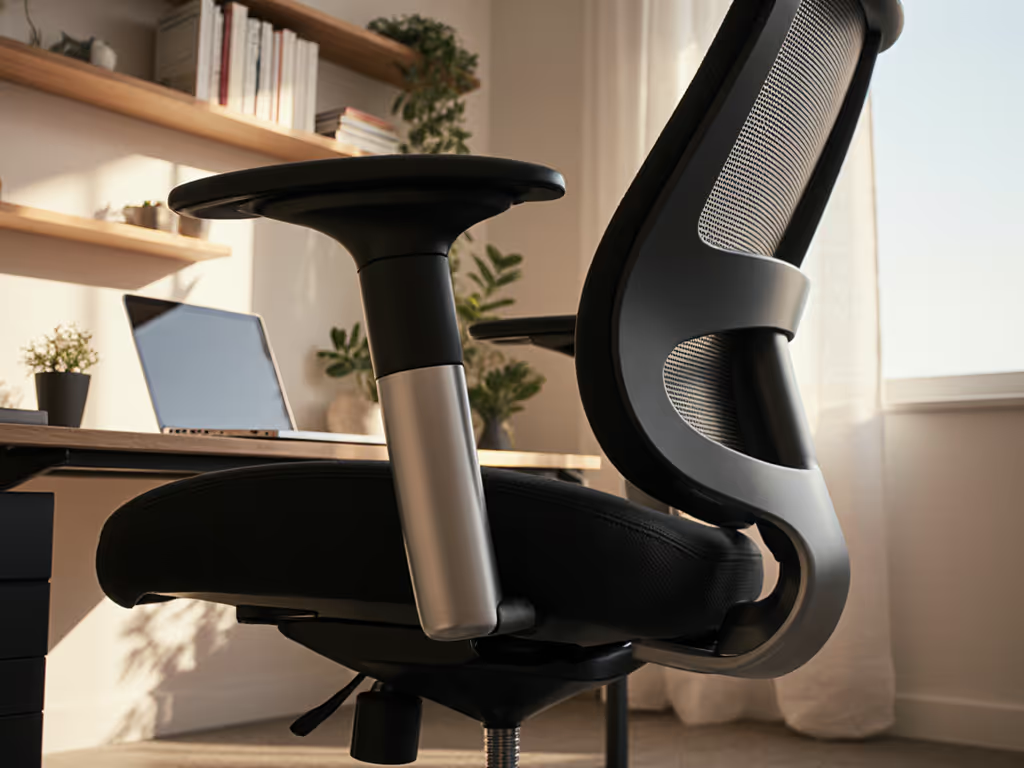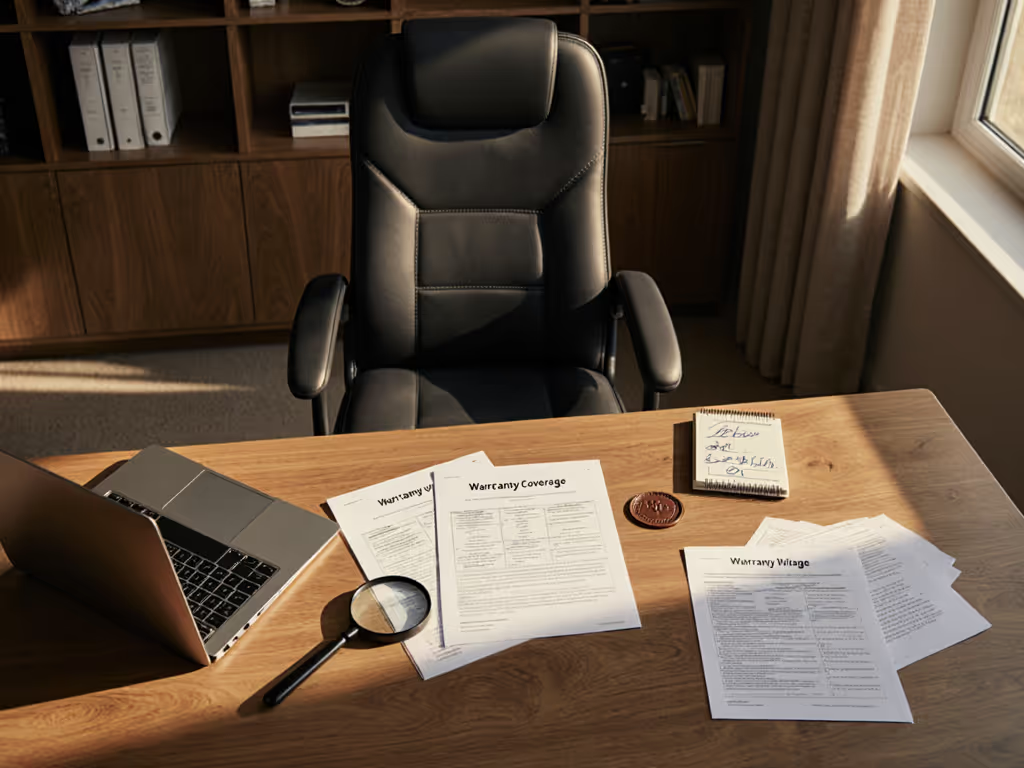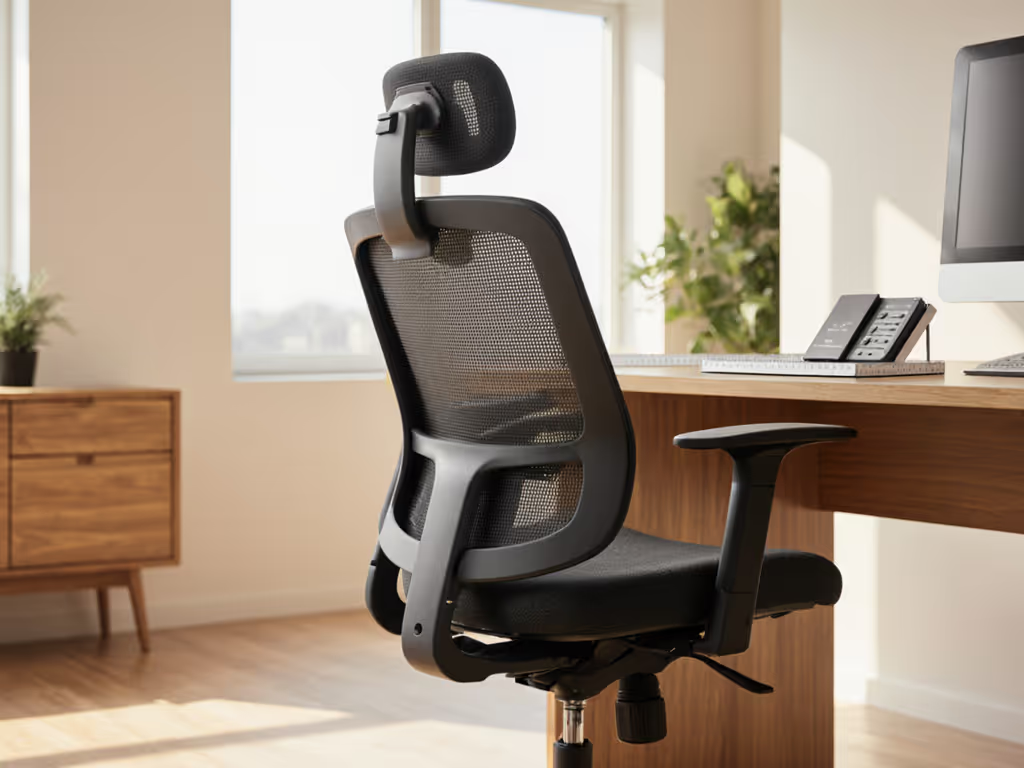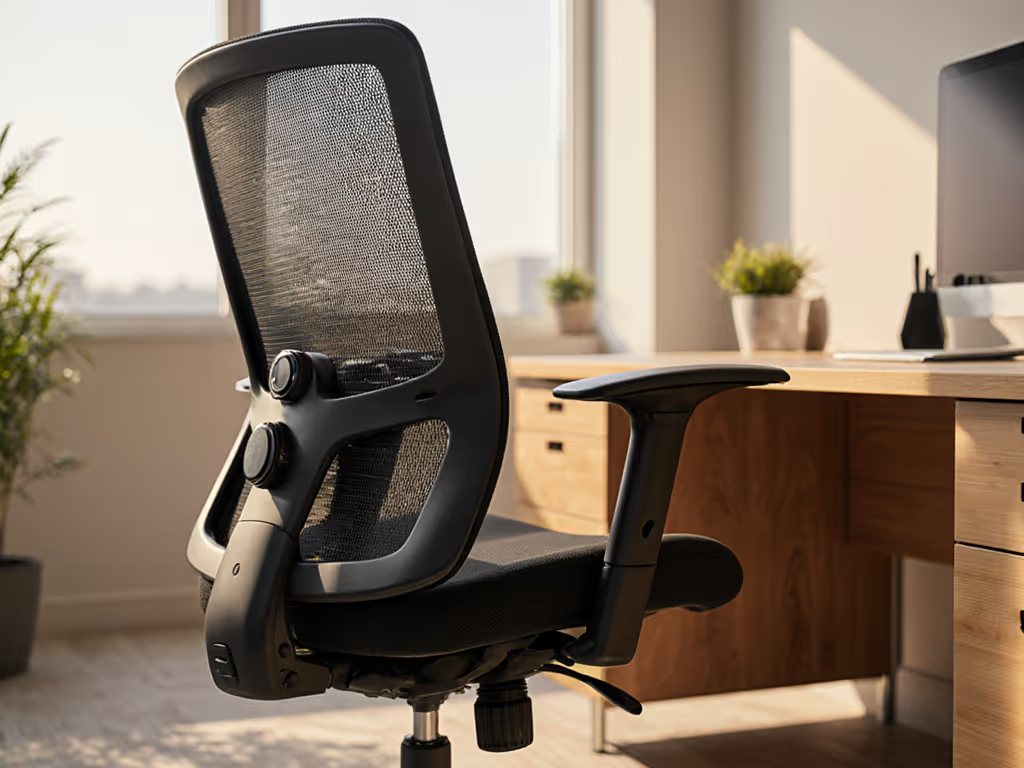
Ergonomic Chair Quality: Spot Durable Construction
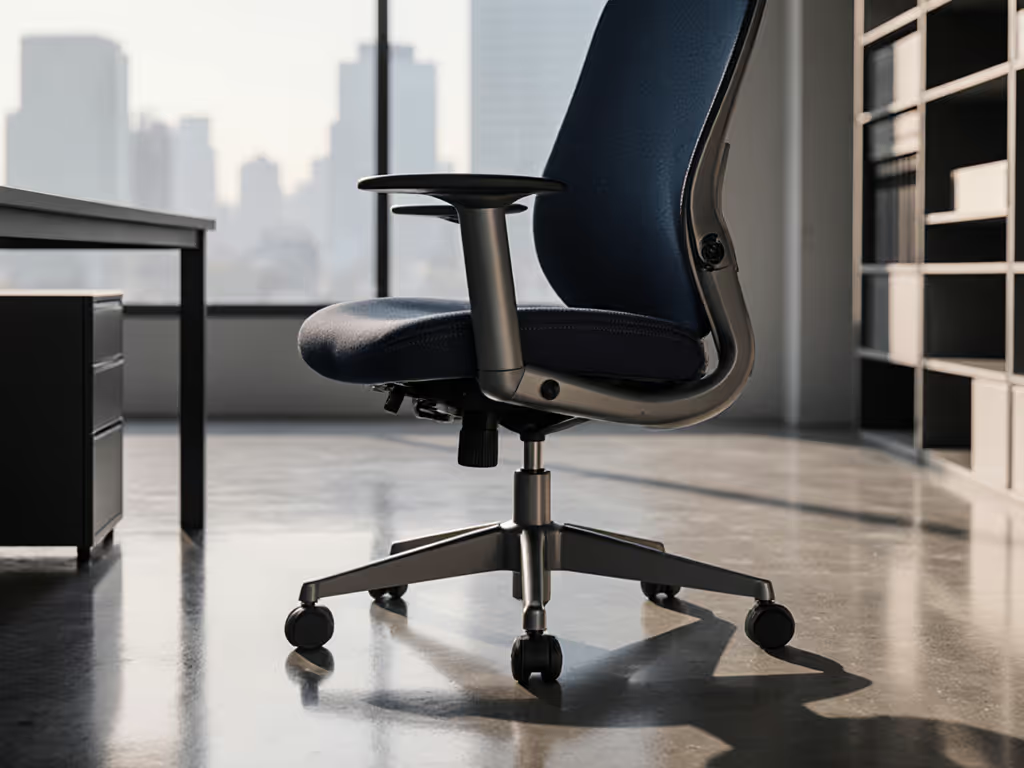
Let's cut through the marketing fog: knowing how to identify quality office chairs means understanding what separates a genuinely durable ergonomic chair from the countless disposable imitations flooding the market. I've seen too many "premium" chairs fail within 18 months (collapsing foam, stripped adjustment mechanisms, and frames that crack under normal use). As someone who has built total-cost-of-occupation models for everything from Silicon Valley startups to European healthcare networks, I can tell you this: the real cost isn't in the purchase price. It's in the replacement cycles, productivity losses from discomfort, and medical claims from poorly supported workers. Today, I'll give you a plainspoken, checklist-driven framework for assessing construction quality that actually matters, no fluff, no hype, just actionable criteria backed by years of hands-on repair work and lifecycle cost analysis.
Why "Ergonomic" Labels Lie
"Ergonomic" has become nearly meaningless in chair marketing. Nearly every mid-to-high-end chair claims ergonomic credentials, yet most fail critical durability tests within 2-3 years of regular use. The real differentiator isn't fancy lumbar adjustments or multi-knit fabric, it's construction quality that survives daily use across thousands of cycles. When I evaluate a chair, I don't care about its Instagram aesthetics or celebrity endorsements. I care about whether its mechanisms will still function after 10,000 reclines, whether its foam maintains density after 5 years, and whether I can replace individual components when they wear out.
That startup story where I revived a 'dead' chair with a $28 gas lift? That's the moment I realized durability isn't about paying more upfront, it's about paying less over time. Value is longevity, not launch hype or showroom gloss. A chair you can keep for 10+ years with periodic part replacements beats a "premium" model that becomes landfill in half that time. That's the foundation of my assessment framework.
The 5 Critical Tests for Chair Construction Quality
Don't trust marketing claims. Test these five areas yourself before you buy. I've distilled these from reviewing over 200 chair models, consulting ergonomic standards (ANSI/BIFMA X5.1, EN 1335), and repairing chairs that failed within warranty periods.
1. Structural Integrity: The Frame Test
The chair's skeleton determines its lifespan. Here's what to inspect:
- Material composition: Look for aircraft-grade aluminum frames (6061-T6 or 7075) over stamped steel or plastic composites. Aluminum resists fatigue, corrosion, and maintains rigidity across temperature fluctuations.
- Weld points: On metal frames, examine weld seams under the seat. Quality welds are smooth, continuous, and free of cracks or spatter. Poor welds fail at stress points, usually where the backrest connects to the base.
- Wall thickness: For tubular frames, minimum 1.8mm wall thickness is required for 10+ year durability. Thin tubing (under 1.2mm) flexes under load, eventually fatiguing and cracking.
- Weight capacity certification: Proper chairs list tested weight limits (not theoretical), with independent certification. Avoid "up to 300 lbs" claims without proof, BIFMA-certified chairs publish specific test results.
I recently tested two similarly priced chairs side-by-side. One claimed "commercial grade" but flexed 8mm under 200 lbs of static load. The other barely registered movement. After 12 months, the flimsy chair developed a dangerous wobble at the base. Don't trust your spine to a chair you can visibly flex with your hands.
2. Material Quality Assessment: Beyond the Surface
Seat and back materials directly impact long-term comfort and durability. Most reviews focus on initial comfort while ignoring how materials degrade. Here's what matters:
- Seat foam density: Minimum 1.8 lb/cu ft (29 kg/m³) for residential use; 2.5+ lb/cu ft (40+ kg/m³) for commercial. Low-density foam (<1.5) permanently compresses within 6 months, creating painful pressure points. Test by sitting for 10 minutes, does it feel supportive or like you're sinking?
- Fabric breathability vs. durability: Mesh chairs often sacrifice durability for breathability. Look for dual-layer mesh (like L-Spring technology) with minimum 100,000 double rub count. Single-layer mesh typically sags within 2 years.
- Waterfall edge effectiveness: Many chairs feature a "waterfall edge" but implement it poorly. Proper implementation reduces thigh pressure by 25-40% (per CCOHS research). Verify by sitting with knees at 90 degrees, your thighs should slope downward with no pressure behind the knees.
Remember: materials quality assessment isn't just about "feeling premium" today. It's whether that mesh maintains tension, that foam rebounds after 8 hours, and that fabric resists pilling through daily use. No amount of "ergonomic design" compensates for shoddy materials.
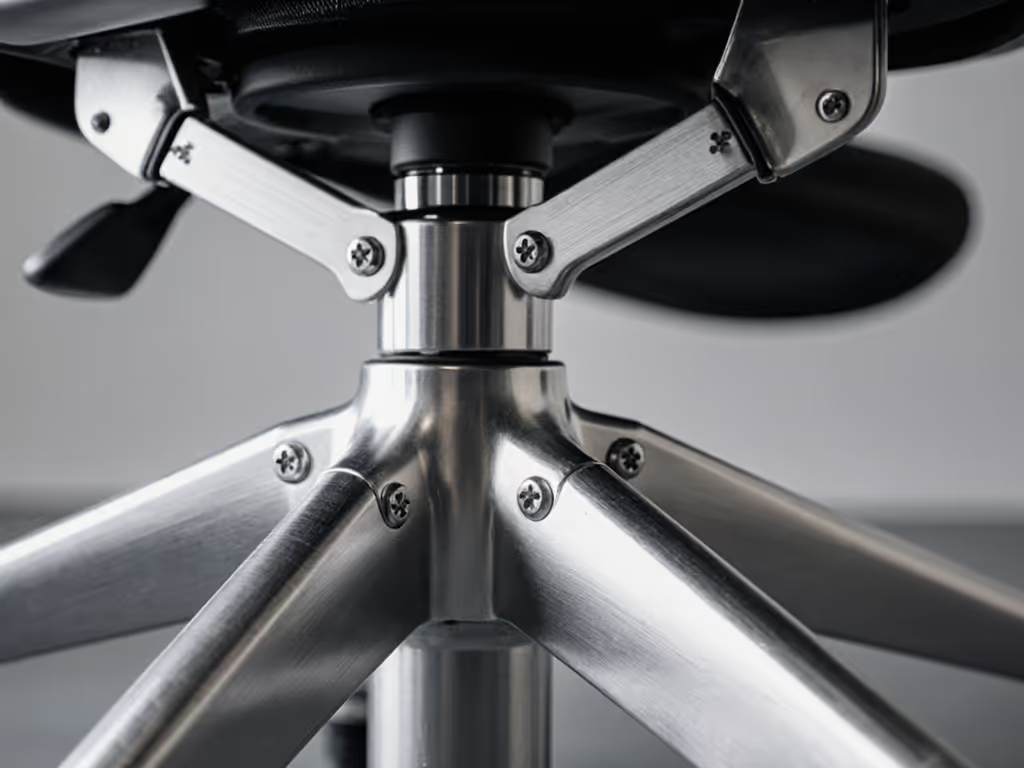
3. Mechanism Durability: Where Most Chairs Fail
The mechanism is the chair's heart, and its weakest point. Most "premium" chairs use off-the-shelf mechanisms with undisclosed cycle ratings. Here's what you must verify:
- Cycle testing certification: Reputable manufacturers publish independent test results. Minimum 100,000 cycles for seat height adjustment; 80,000+ for tilt mechanisms. I've seen chairs fail at 15,000 cycles despite "commercial use" claims.
- Adjustment precision: Good mechanisms maintain position under load. Test by reclining with weight forward, does it stay put or slowly sink? Tension adjustments should have smooth, consistent resistance throughout the range.
- Lumbar support mechanics: Avoid plastic sliders that bind or wear out. Metal-on-metal or high-durometer polymer systems last 3-5x longer. Verify lumbar height adjustment covers T12-L5 vertebrae (critical for taller users).
- Armrest durability: The #1 failure point in modern chairs. Look for CNC-machined arm caps over stamped plastic. Arm height adjustment should remain stable after 5,000 cycles (test by pressing down firmly).
During my work with healthcare admin teams, I documented chairs where armrests failed within 9 months, forcing users into compromised postures that contributed to wrist strain. A $500 chair with $5 armrests isn't a bargain; it's a liability.
4. Certification Verification: Beyond the Sticker
Not all certifications are equal. Here's what actually matters:
- ANSI/BIFMA X5.1: The gold standard for commercial chair durability. Don't accept "compliant" claims, request the actual test report showing cycle counts, weight limits, and failure points.
- GREENGUARD Gold: For low VOC emissions (critical for home offices and sensitive users). Many chairs skip this to cut costs.
- ISO 9001: Indicates consistent manufacturing quality, not just product design.
I once audited a chair line marketed as "BIFMA-certified" that only met basic stability requirements, not the full durability, safety, and performance testing. Always verify certification scope. A chair passing only basic stability tests (BIFMA X5.4) isn't suitable for 8-hour daily use.
5. Serviceability: The True Test of Value
This separates professional-grade chairs from consumer products. Ask these questions before buying:
- Are service manuals publicly available? If not, repairs become guesswork. Look for manufacturers providing exploded diagrams and torque specs.
- Can you purchase individual components? Seat pans, gas lifts, and armrests should be orderable 5+ years post-purchase.
- Warranty terms: "Lifetime" often means "lifetime of original purchaser" but excludes mechanisms. Look for minimum 5-year full coverage (not just frame).
- Repair network: For enterprise buyers, verify local technician availability. Some brands require shipping entire chairs for $50 repairs.
The chair I repaired for that startup wasn't special, it just had modular components and publicly available parts diagrams. Fifteen minutes, two tools, and $28 saved them $1,200. That's the difference between planned obsolescence and professional equipment.
Comparative Analysis: Construction Approaches That Last
Not all quality chairs look or function the same. Here's how different construction philosophies perform across my durability metrics:
| Feature | Budget Chairs (<$300) | Mid-Range ($300-$600) | Professional Grade ($600+) |
|---|---|---|---|
| Frame Material | Thin steel or plastic | 1.5-1.8mm aluminum | 2.0mm+ aircraft aluminum |
| Foam Density | 1.2-1.5 lb/cu ft | 1.8-2.2 lb/cu ft | 2.5+ lb/cu ft |
| Mechanism Cycle Rating | 30,000-50,000 | 80,000-100,000 | 150,000+ |
| Certified Weight Limit | 225-250 lbs | 275-300 lbs | 350-400+ lbs |
| Public Service Manuals | ❌ Rare | ⭕ Sometimes | ✅ Standard |
| Individual Parts Availability | ❌ | ⭕ Limited | ✅ |
| Warranty Coverage | 1-2 years | 2-5 years | 5-12 years |
The data is clear: budget chairs often cut corners on frame thickness and mechanism quality, exactly the components that fail first. Mid-range chairs improve materials but often lack true serviceability. Only professional-grade chairs deliver the modularity and documentation needed for true longevity. But don't assume price guarantees quality; I've seen $1,200 chairs with inferior mechanisms to $700 competitors. For well-built options that excel in long-term construction quality, see our durability-focused ergonomic task chairs.
Your Actionable Checklist for Assessing Chair Quality
Before you buy any ergonomic chair, conduct this 10-minute inspection:
- Frame test: Lift chair by backrest, if it twists or flexes visibly, walk away
- Weld inspection: Check critical joints for smooth, continuous seams (no bubbles or gaps)
- Material compression: Sit for 10 minutes, does foam remain supportive or do you feel the base?
- Mechanism test: Perform 5 full reclines, does tension remain consistent? Does it stay in position?
- Armrest stability: Press down firmly on armrests, do they wobble or sink?
- Waterfall edge verification: Sit with knees at 90°, is there pressure behind knees?
- Certification verification: Request specific test reports, not just "compliant" claims
- Parts availability check: Search manufacturer site for individual component part numbers
- Warranty scrutiny: What's covered beyond frame? What constitutes "normal wear"?
- Service manual search: Can you find repair documentation online before purchase?
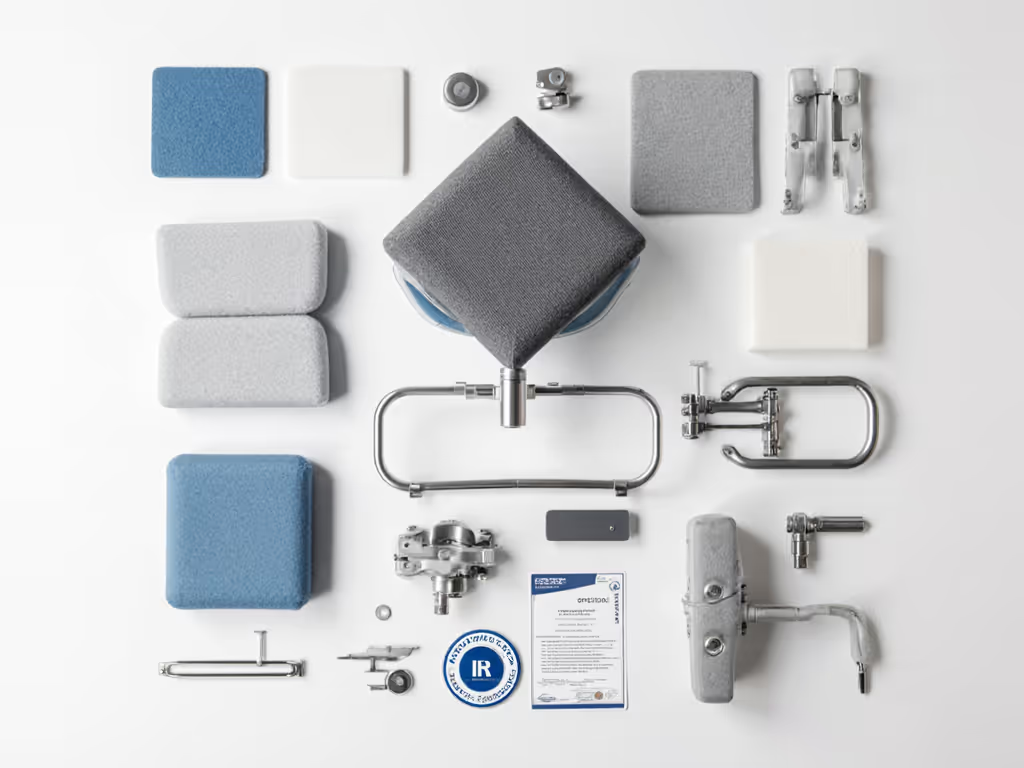
This isn't just about avoiding discomfort today. It's about preventing the $1,200 replacement cost down the road when that cheap gas lift fails or the mechanism strips out. Every failed component represents wasted productivity, frustrated users, and avoidable expenses.
The Verdict: What Truly Makes a Quality Ergonomic Chair
After years of cost breakdowns and lifecycle analysis, I've reached a simple conclusion: a chair's true value isn't in its purchase price, but in its cost per productive hour. The most expensive chair can be the cheapest option when it lasts 15,000 hours with minimal maintenance, while a "bargain" model failing at 5,000 hours becomes your most costly investment.
Here's my final assessment framework for identifying quality office chairs:
- Must-haves: Aircraft-grade aluminum frame (2.0mm+), foam density ≥2.5 lb/cu ft, 100,000+ cycle mechanisms, BIFMA X5.1 certification with published test data
- Worth the premium: Public service manuals, individual parts availability, 5+ year warranty covering mechanisms
- Red flags: "Lifetime" warranty without mechanism coverage, no published cycle testing, no visible weld points (indicates plastic composites), service manuals locked behind dealer access
I've seen teams transform their remote work experience not by spending more, but by spending smarter, choosing chairs built for repair, not replacement. When you buy once and fix often, you stop feeding the disposables economy and start investing in tools that serve you for years. The best ergonomic chair isn't the shiniest new model, it's the one still performing flawlessly after everyone else has replaced theirs twice.
Before you click "buy," ask: Can I get this chair working again with a $28 gas lift and clear instructions? If not, you're buying disposables, not furniture. And in my experience, your back, and your budget, will thank you for choosing differently. Buy once, fix often.

